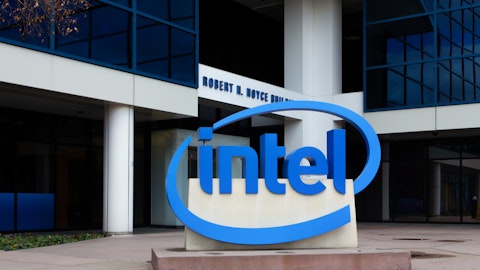2. Free Cash Flow
Without free cash flow, a company is unlikely to survive over the long run. That’s how important this financial metric is and a key reason why we analyze it to find safer dividend stocks.
Free cash flow is calculated using the company’s statement of cash flows. A company’s capital expenditures (i.e. money spent on property, plant, and equipment) is subtracted from its cash flow from operations (i.e. net income adjusted for non-cash charges such as depreciation) to arrive at free cash flow.
If a company does not generate free cash flow, it does not have funds to return to shareholders via dividends and share repurchases, nor does it have sustainable cash flow to use for acquisitions or debt repayments.
Companies that fail to generate free cash flow typically have capital-intensive businesses with few competitive advantages. We prefer to invest in companies that consistently generate free cash flow in virtually every environment.
Paychex, Inc. (NASDAQ:PAYX) is one such business. The company provides a variety of payroll processing and outsourcing services to small and medium-sized businesses. Its operations require little capital and enjoy high recurring revenue, resulting in extremely consistent free cash flow generation. That’s one reason why we own the company in our Conservative Retirees dividend portfolio.

Source: Simply Safe Dividends
Follow Paychex Inc (NASDAQ:PAYX)
Follow Paychex Inc (NASDAQ:PAYX)
On the other end of the spectrum, United States Steel Corporation (NYSE:X) has been an unpredictable free cash flow generator. The company must invest heavily in its capital-intensive steel mills and has little control over the prices it can charge for its products.

Source: Simply Safe Dividends
Looking at free cash flow generation alone, Paychex appears to be the more reliable dividend payer of the two companies.
Follow United States Steel Corp (NYSE:X)
Follow United States Steel Corp (NYSE:X)
3. Return on Invested Capital
Suppose you had $100 to invest. One company can turn your $100 into $105, but another company can produce $110 with your money. All other things equal, we would pick the second company because it can grow our money faster.
To keep things simple, that is what return on invested capital is all about. Businesses take in funds (debt and/or equity) and invest to generate a return for shareholders. Companies that earn higher returns can compound our capital faster and are generally more desirable. Companies that earn returns below what investors demand should, in theory, eventually go out of existence.
For these reasons, one of Warren Buffett’s favorite financial ratios is return on equity, which divides a company’s net income by its shareholders’ equity. For example, if shareholders purchased $100 of stock to fund a company and it generated $10 of profit, the company’s return on equity would be 10% ($10 of net income divided by $100 of equity). Buffett likes companies that earn a high return on equity because they compound earnings faster and usually have some sort of competitive advantage.
Return on invested capital is similar to return on equity, but it measures a company’s return on equity and debt. This is a key adjustment because it helps adjust for differences in capital structures between firms so we can better compare them.
For example, suppose there were two companies that each had $100 worth of assets. Company ABC financed its assets all with equity ($100). Company XYZ financed its assets with $20 of equity and $80 of debt. Both companies generated $10 per share in earnings last year.
If we were simply looking at return on equity, Company ABC would have a return of 10% ($10 of earnings divided by $100 of equity). However, Company XYZ would have a return on equity of 50% ($10 of earnings divided by $20 of equity). At first glance, Company XYZ would seem like the superior business despite their identical level of assets and earnings.
Using return on invested capital instead, we would find that both companies generated a 10% return ($10 of earnings divided by $100 of total capital).
When we analyze a company’s return on invested capital, we look at the level (e.g. 10%) and consistency of its returns (e.g. does it earn a stable return each year or are the returns very volatile). A stable, double-digit return on invested capital over many years of time is often the sign of a highly profitable, efficient company that could have an economic moat.
One example would be The Coca-Cola Co (NYSE:KO), one of Warren Buffett’s top dividend stocks. The company has earned a return on invested capital between 14% and 28% in each of the last 10 years.





